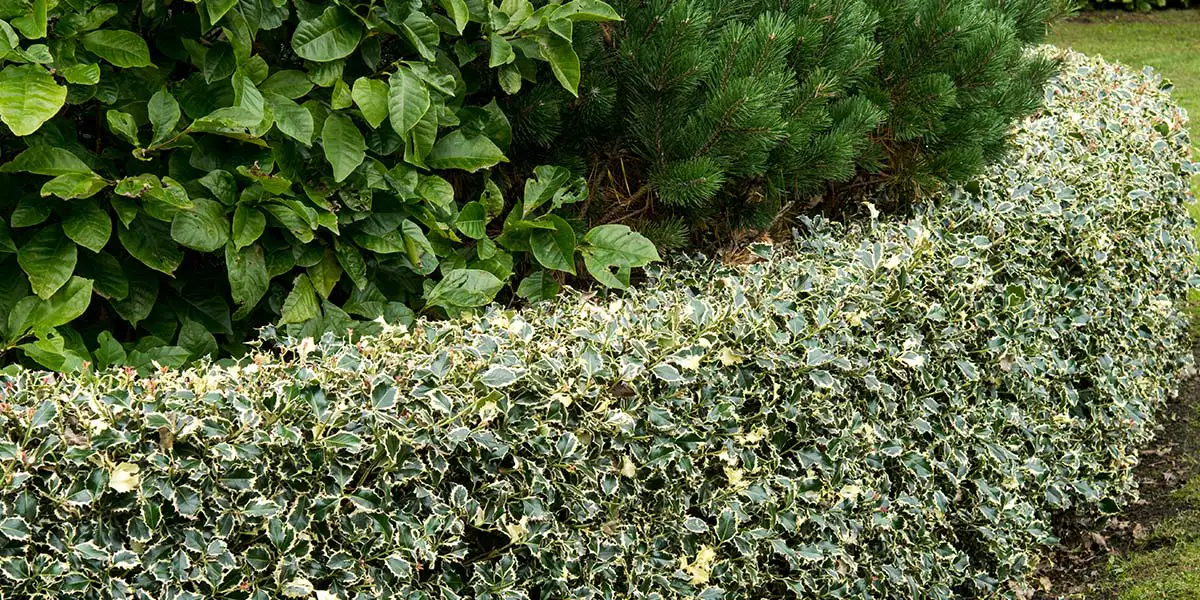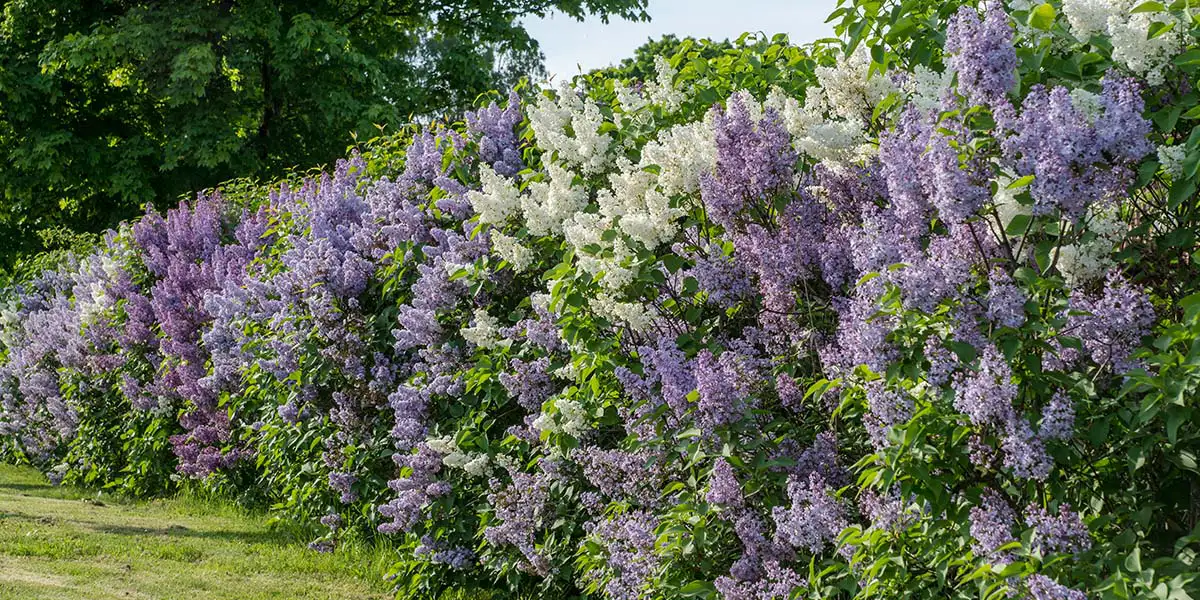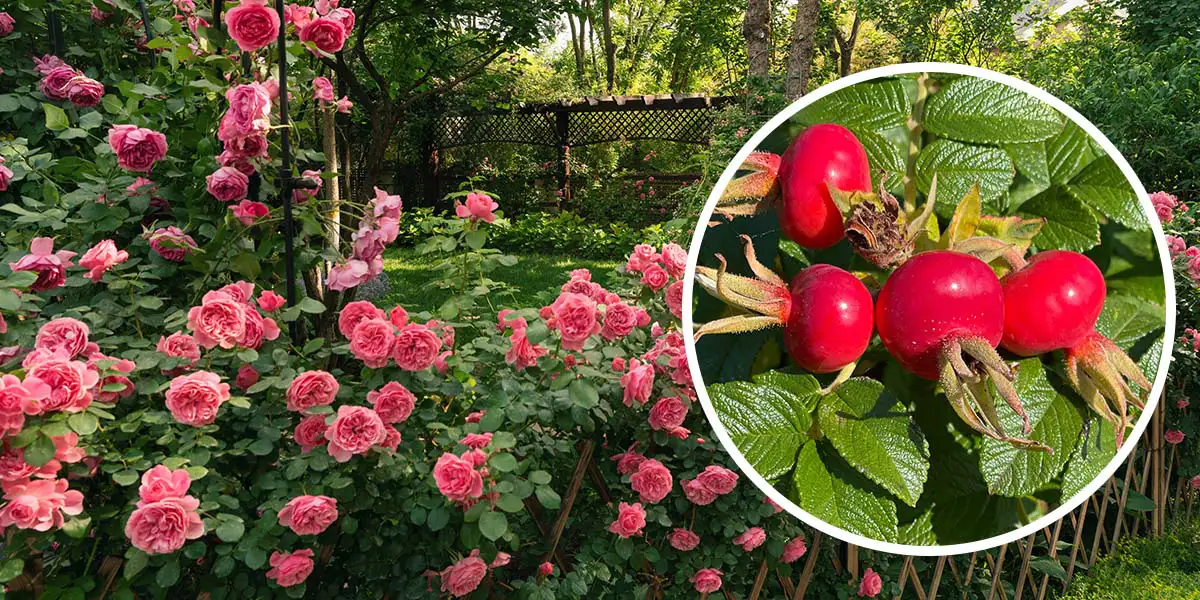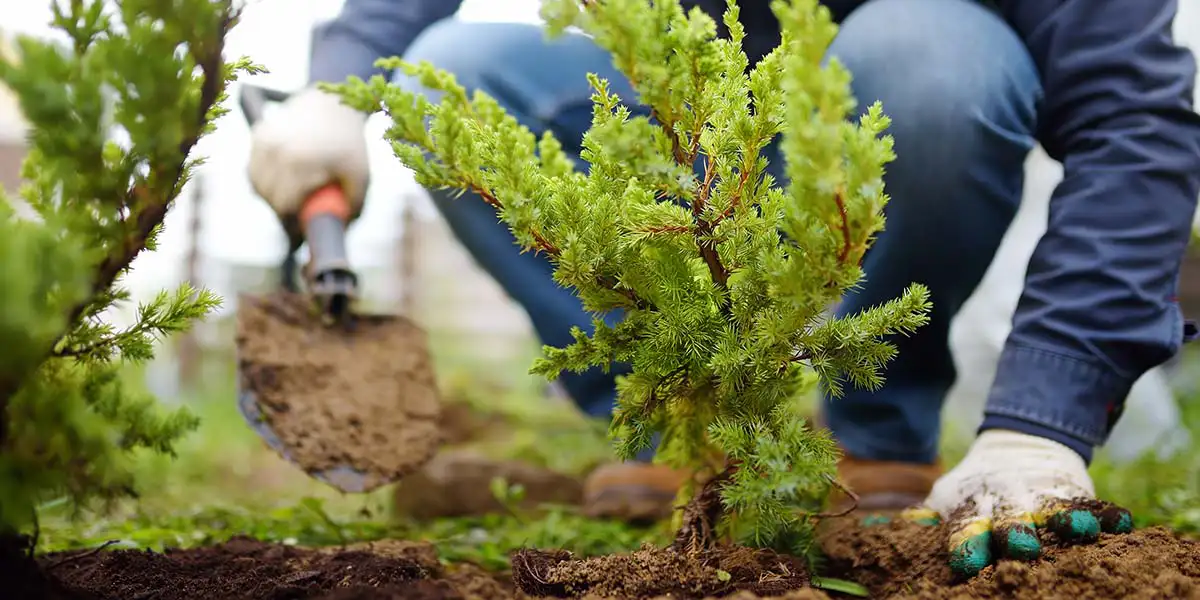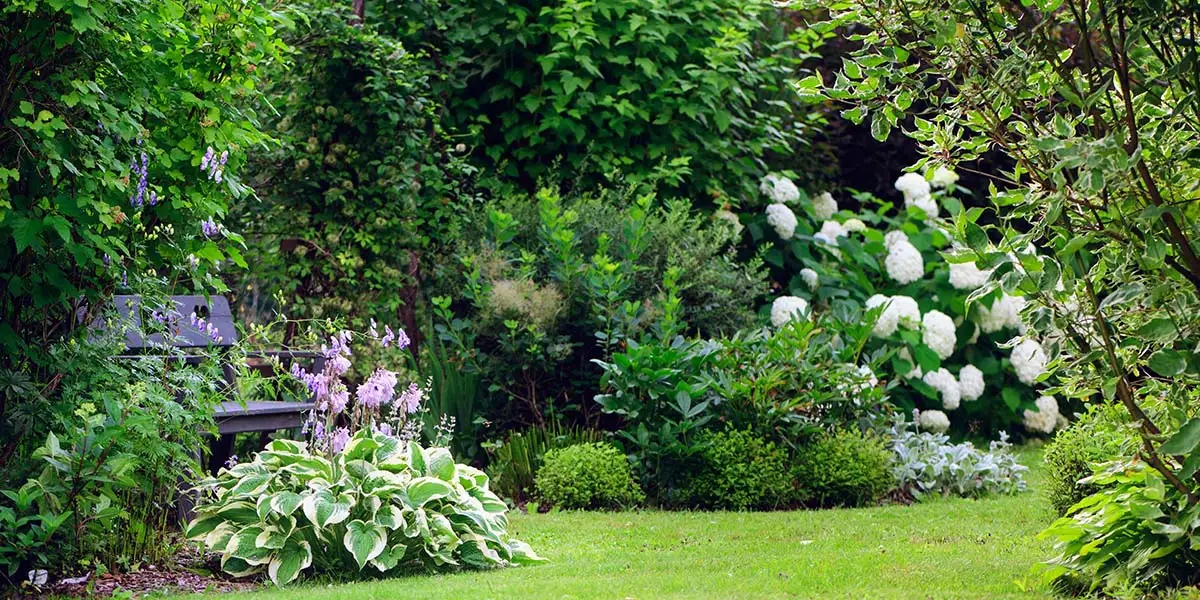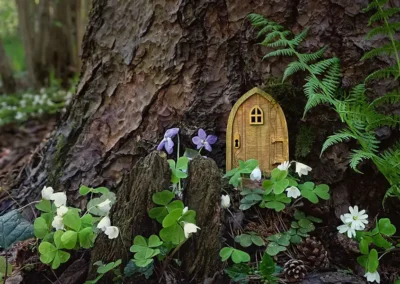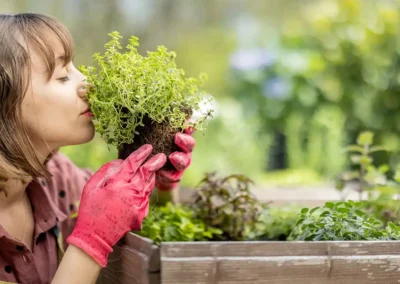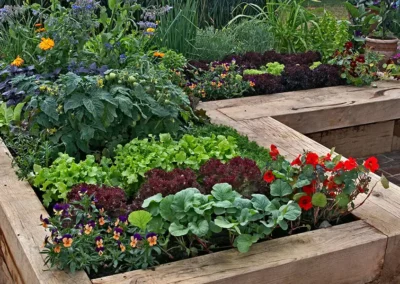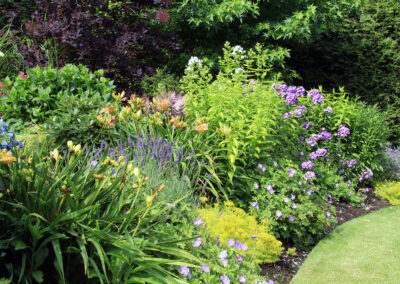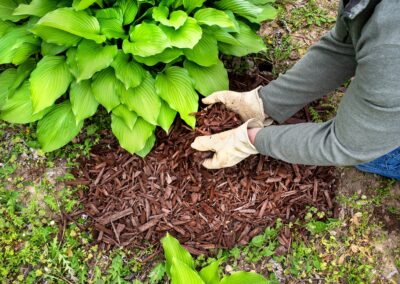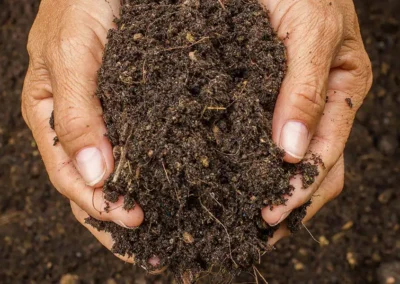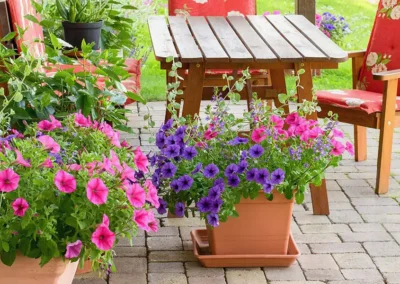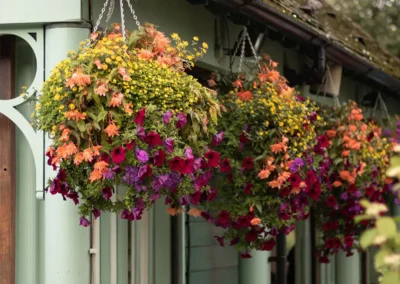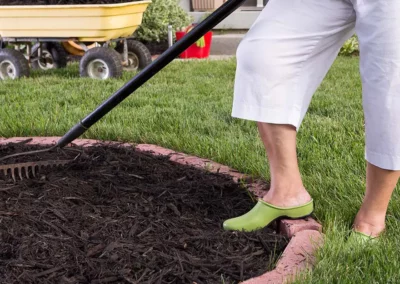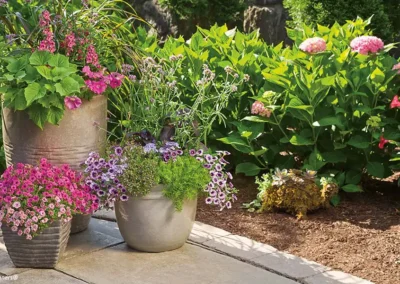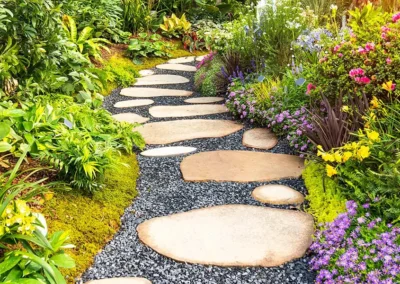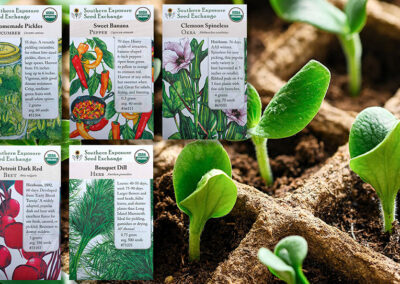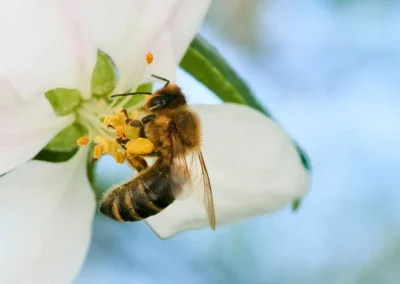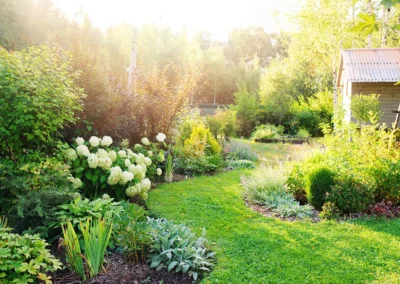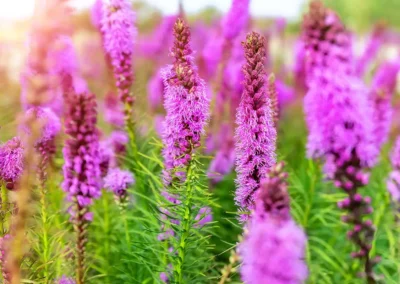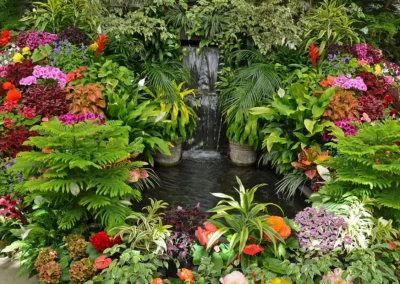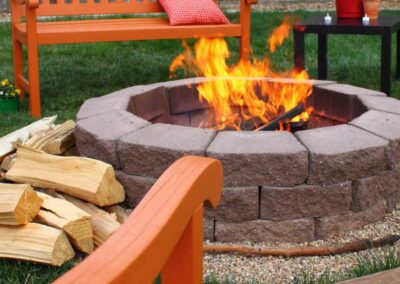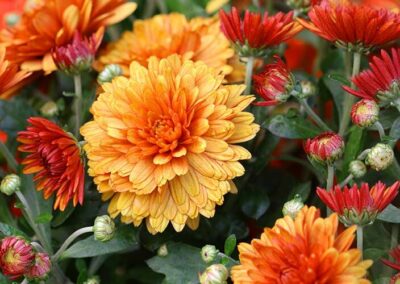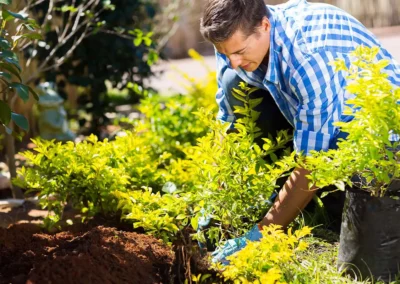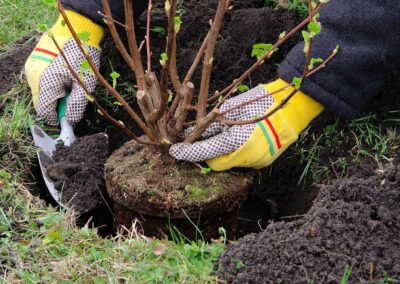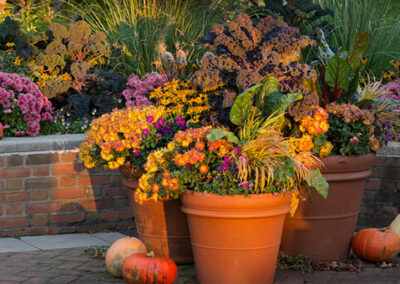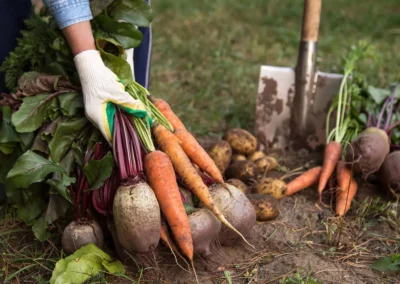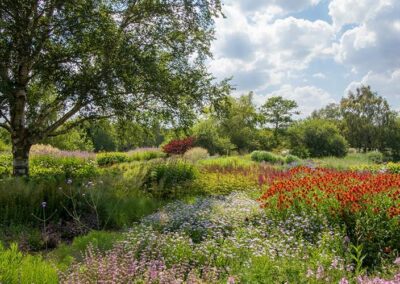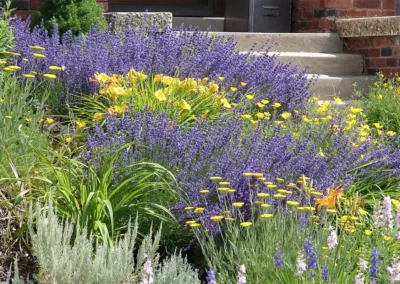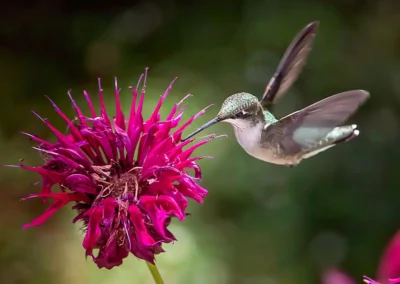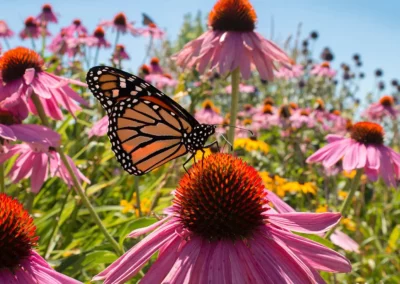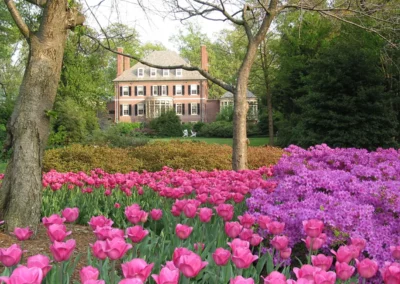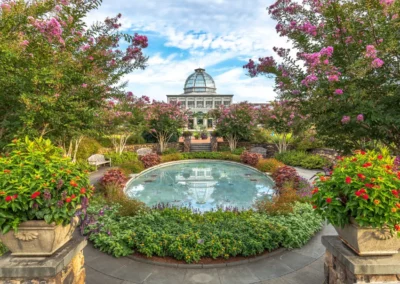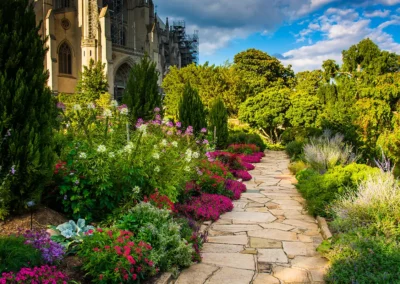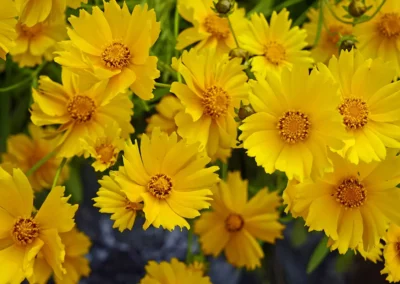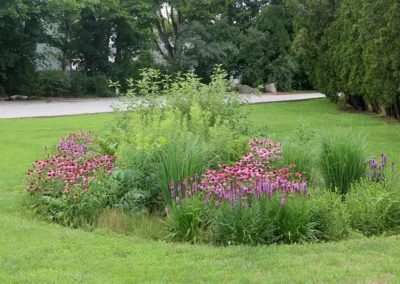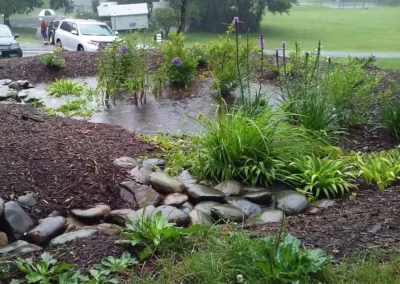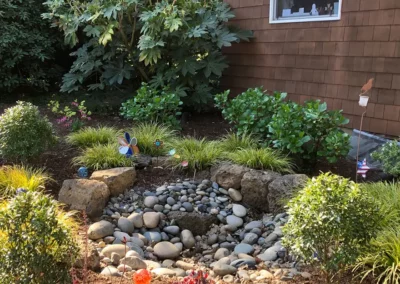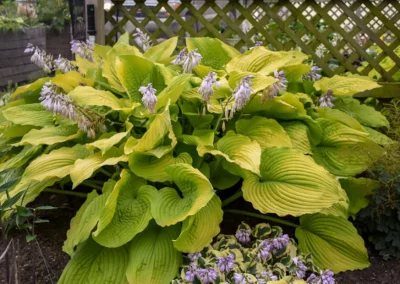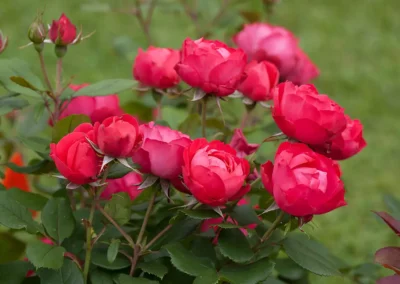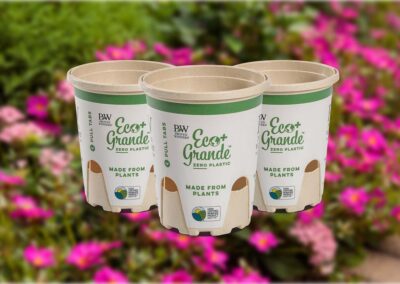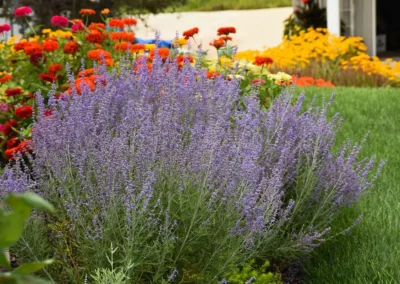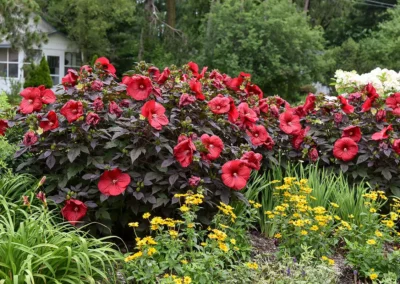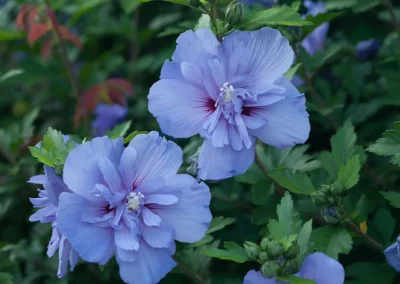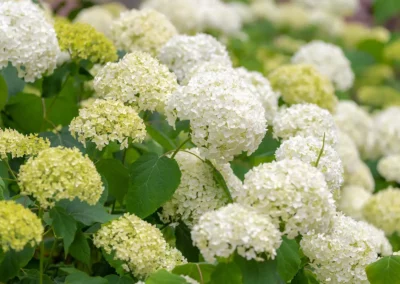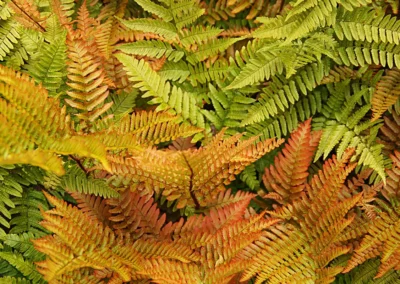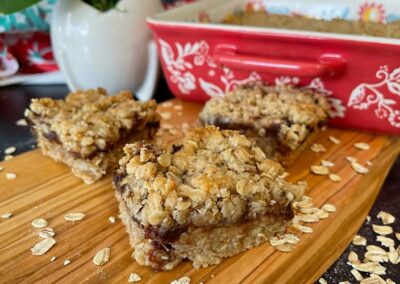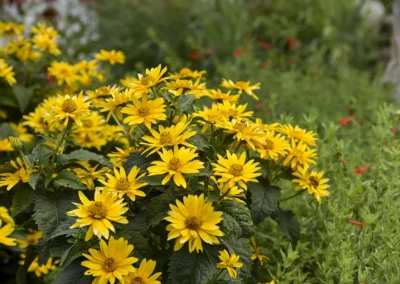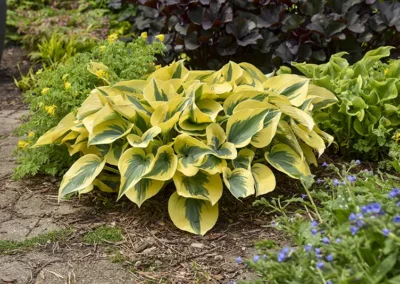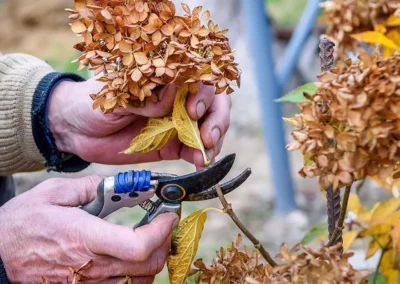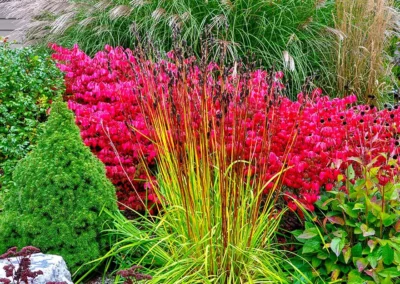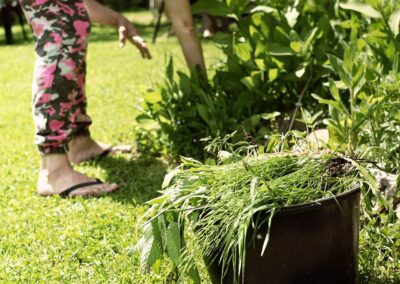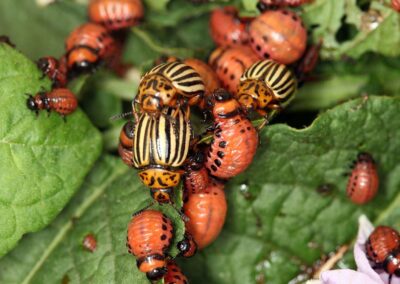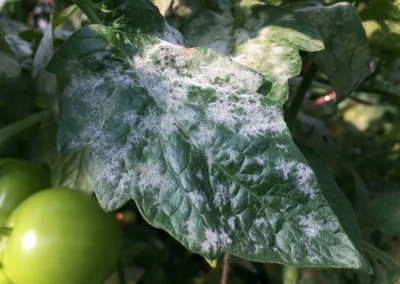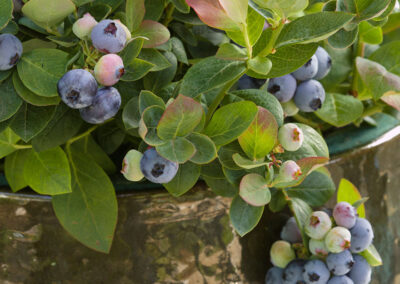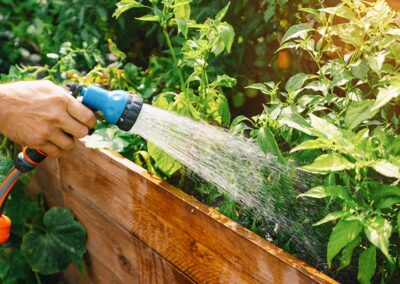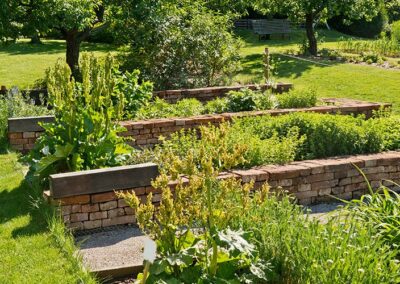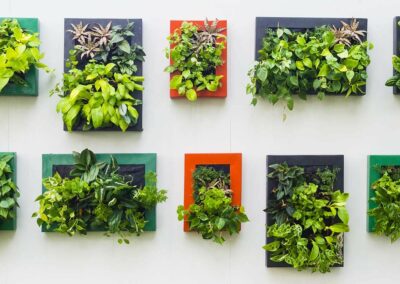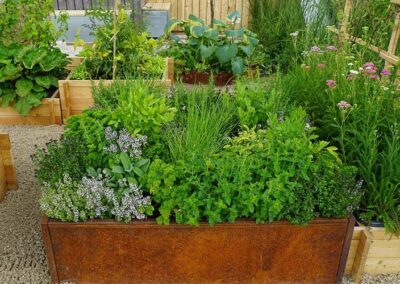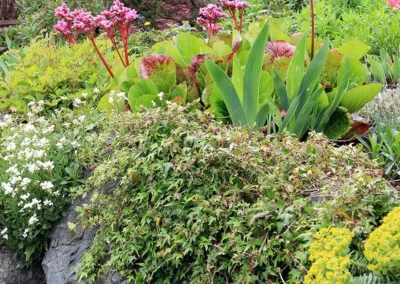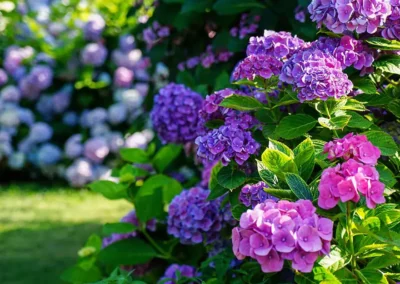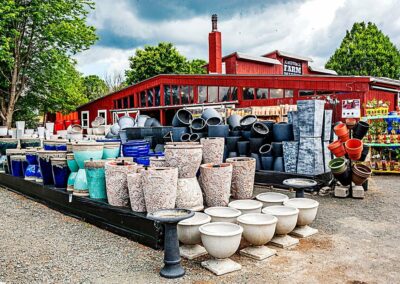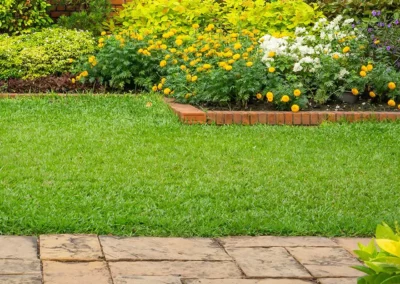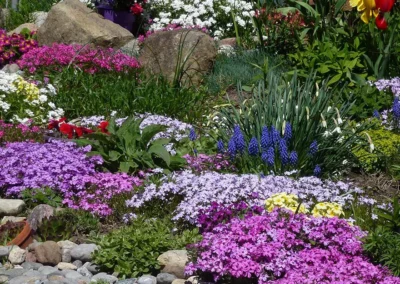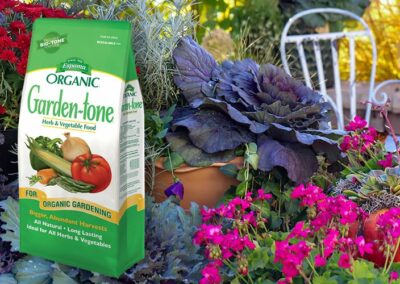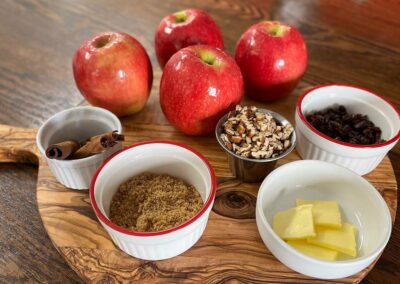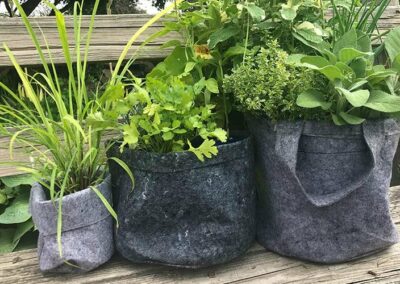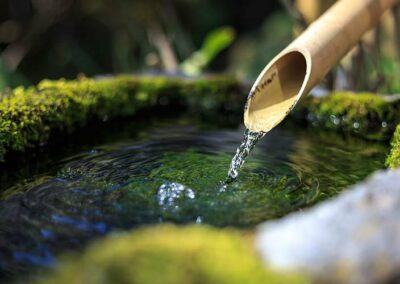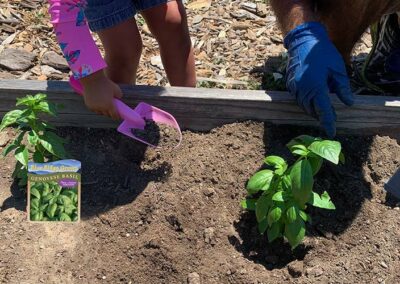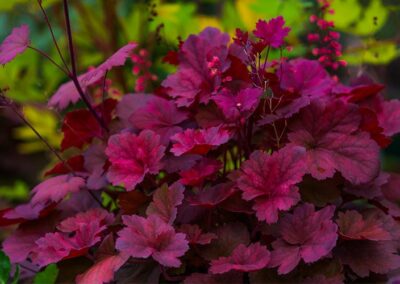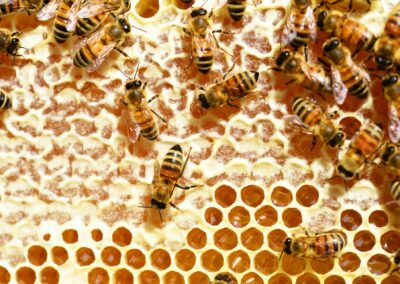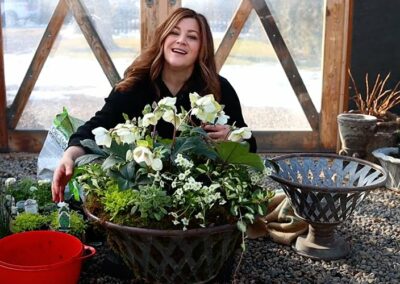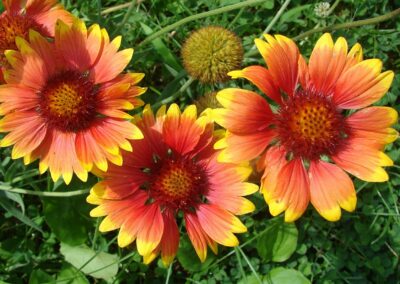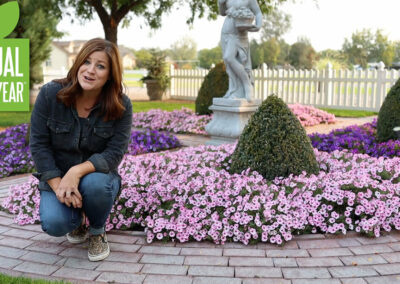When you think of a fence, the first image that likely comes to mind is a wooden or metal structure designed to define boundaries and provide privacy. But what if your fence could be a vibrant, living part of your garden instead? Living fences, composed of trees, shrubs and plants, offer a lush, eco-friendly, and visually appealing alternative to traditional fences. Whether you want to enhance privacy, protect your garden, or simply add a touch of natural beauty, living fences are an excellent choice.
Why Choose a Living Fence?
There are lots of reasons to opt for a living fence over a traditional one:
- Aesthetic Appeal: A living fence is a dynamic, ever-changing feature that offers you seasonal interest with flowers, foliage, and even berries.
- Environmental Benefits: Plants absorb carbon dioxide, release oxygen, and provide habitat for pollinators and other wildlife.
- Cost-Effective: While the initial investment in plants may be comparable to traditional fencing materials, living fences require less long-term maintenance and have a longer lifespan.
- Privacy and Windbreak: Dense shrubs create a natural screen for your yard, reducing noise and blocking unwanted views while buffering wind.
- Increased Biodiversity: Many shrubs attract bees, butterflies, and birds, contributing to a thriving local ecosystem. (And who doesn’t want that?)
Best Shrubs for Living Fences
Choosing the right plants for your living fence depends on your climate, soil conditions, and personal preferences. Here are some of the best shrubs for creating a living barrier:
Evergreens for Year-Round Privacy
If your main goal is to create a solid, year-round privacy screen, evergreen shrubs are an excellent choice. These plants retain their foliage throughout the seasons, ensuring continuous coverage.
- Boxwood (Buxus spp.): A classic choice for hedging, boxwood is slow-growing, but offers dense foliage that can be easily shaped.
- Holly (Ilex spp.): Many varieties of holly have spiny leaves, making them excellent deterrents for unwanted visitors while adding winter interest with their bright red berries. Shown in the image above.
- Privet (Ligustrum spp.): A fast-growing option that provides a dense screen with minimal maintenance.
- Yew (Taxus spp.): A long-lived, shade-tolerant evergreen that is well-suited for formal hedging.
Flowering Shrubs for Beauty and Functionality
If you want a living fence that not only provides privacy, but also bursts into seasonal color, flowering shrubs are a great choice.
- Forsythia (Forsythia spp.): One of the earliest bloomers, forsythia brightens up any landscape with its cheerful yellow flowers in early spring.
- Lilac (Syringa spp.): Not only does lilac provide an effective barrier, but it also fills the air with its signature fragrance in late spring. Shown in the image above.
- Rose of Sharon (Hibiscus syriacus): This summer bloomer gives you hibiscus-like flowers that attract pollinators.
- Spirea (Spiraea spp.): Spirea offers cascading clusters of white or pink flowers and is a low-maintenance option.
Berry-Producing Shrubs for Wildlife and Edible Yields
If you love the idea of a multi-functional living fence, consider berry-producing shrubs that provide food for both wildlife and humans.
- Aronia (Aronia melanocarpa): Also known as chokeberry, this native shrub produces antioxidant-rich berries and stunning fall foliage.
- Elderberry (Sambucus spp.): This one’s a great option for those interested in making elderberry syrup, wine, or jam while supporting pollinators.
- Rugosa Rose (Rosa rugosa): This tough, salt-tolerant shrub produces fragrant flowers followed by vitamin-rich rose hips. Shown in image above.
- Serviceberry (Amelanchier spp.): An early-bloomer, this shrub has edible berries that taste like a mix of blueberries and apples.
Planting and Maintenance Tips
Creating a thriving living fence requires some planning and care, but the results are well worth it! Follow these key tips for success:
Planning and Spacing
- Choose shrubs that suit your climate and soil conditions. (As a reminder, here at the Garden Market, we’re in zone 7b.)
- Space plants appropriately to allow for healthy growth and air circulation. This varies depending on the species—some shrubs should be planted close together for a dense screen, while others require more room to spread.
- Consider staggering your planting in a double row for additional density.
Soil Preparation and Planting
- Amend the soil with organic matter such as compost to provide nutrients.
- Dig a hole twice the width of the root ball, but no deeper than the root system.
- Water thoroughly after planting, and mulch around the base to retain moisture and suppress weeds.
Pruning and Shaping
- Regular pruning encourages bushier growth and helps maintain the desired shape.
- Some shrubs, like privet and boxwood, respond well to formal hedging, while others, like lilac and elderberry, benefit from selective pruning to enhance flowering and fruiting.
Watering and Fertilization
- Newly planted shrubs require regular watering, especially in the first year as they establish their root systems.
- Once mature, many shrubs are drought-tolerant, but still benefit from deep watering during prolonged dry spells.
- Apply a balanced fertilizer in early spring to promote healthy growth.
Creative Ways to Use a Living Fence
Beyond traditional hedging, there are many creative ways to incorporate a living fence into your landscape:
- Mixed Shrub Borders: Combine different types of shrubs for a varied and visually interesting barrier.
- Pollinator-Friendly Hedges: Plant nectar-rich species such as butterfly bush (Buddleja spp.) or viburnum to attract bees and butterflies.
- Fragrant Privacy Screens: Use plants with aromatic foliage and blooms, such as lavender (Lavandula spp.) or mock orange (Philadelphus spp.), to create a sensory delight.
- Seasonal Interest Hedges: Choose a mix of deciduous and evergreen shrubs to ensure year-round appeal with flowers in spring, berries in summer, colorful foliage in fall, and structure in winter.
A Beautiful Way to Define Your Space
A living fence is more than just a boundary—it’s a dynamic, beautiful, and environmentally friendly feature that enhances any garden. Whether you want year-round privacy, vibrant flowers, or even an edible yield, there’s a perfect combination of shrubs to suit your needs. By carefully selecting, planting, and maintaining your living fence, you’ll enjoy a lush and thriving landscape for years to come.
Why settle for a dull, static fence when you can grow a living masterpiece? Start planning your living fence today and bring new life to your outdoor space!

